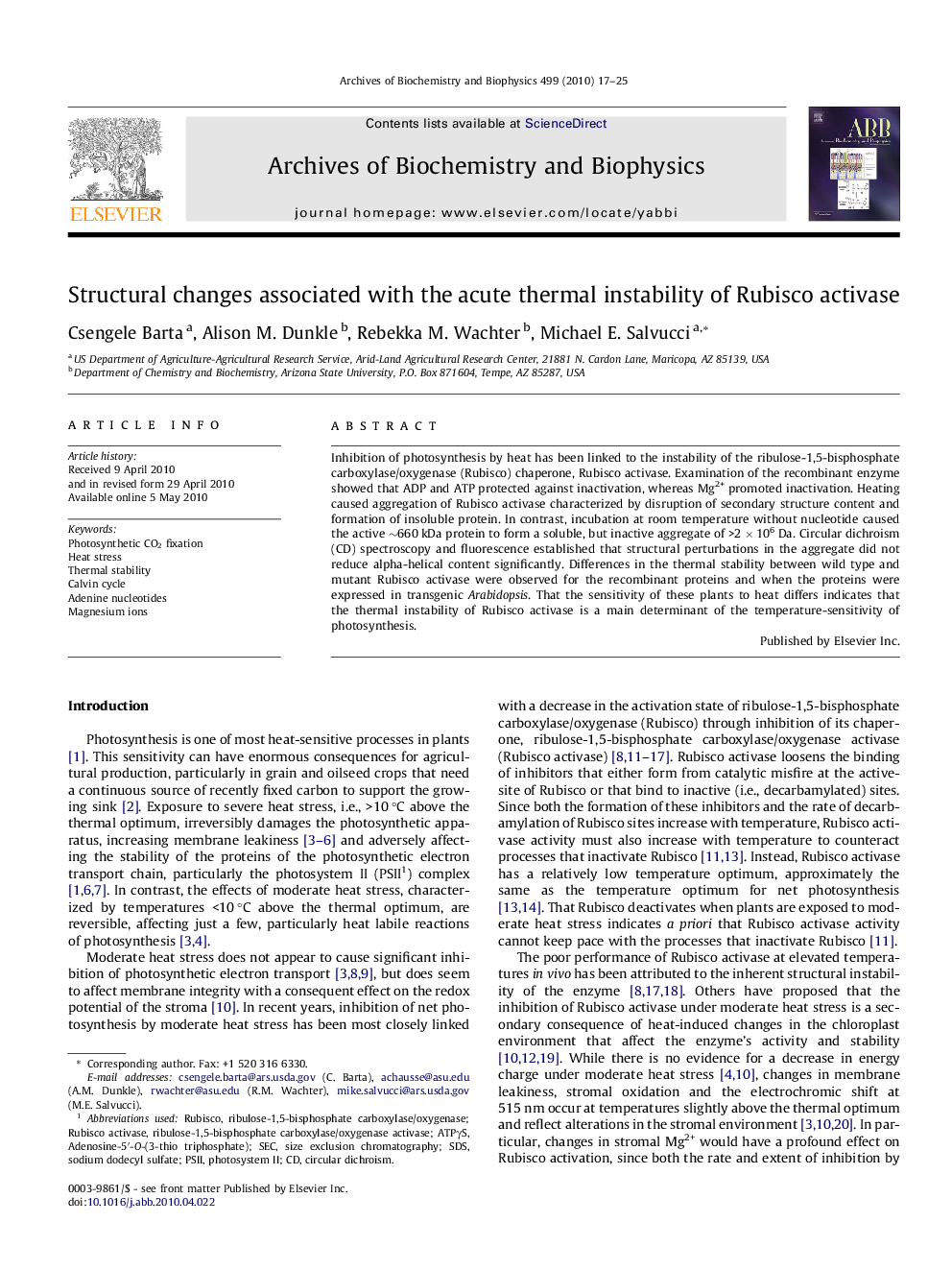| Article ID | Journal | Published Year | Pages | File Type |
|---|---|---|---|---|
| 1926036 | Archives of Biochemistry and Biophysics | 2010 | 9 Pages |
Inhibition of photosynthesis by heat has been linked to the instability of the ribulose-1,5-bisphosphate carboxylase/oxygenase (Rubisco) chaperone, Rubisco activase. Examination of the recombinant enzyme showed that ADP and ATP protected against inactivation, whereas Mg2+ promoted inactivation. Heating caused aggregation of Rubisco activase characterized by disruption of secondary structure content and formation of insoluble protein. In contrast, incubation at room temperature without nucleotide caused the active ∼660 kDa protein to form a soluble, but inactive aggregate of >2 × 106 Da. Circular dichroism (CD) spectroscopy and fluorescence established that structural perturbations in the aggregate did not reduce alpha-helical content significantly. Differences in the thermal stability between wild type and mutant Rubisco activase were observed for the recombinant proteins and when the proteins were expressed in transgenic Arabidopsis. That the sensitivity of these plants to heat differs indicates that the thermal instability of Rubisco activase is a main determinant of the temperature-sensitivity of photosynthesis.
